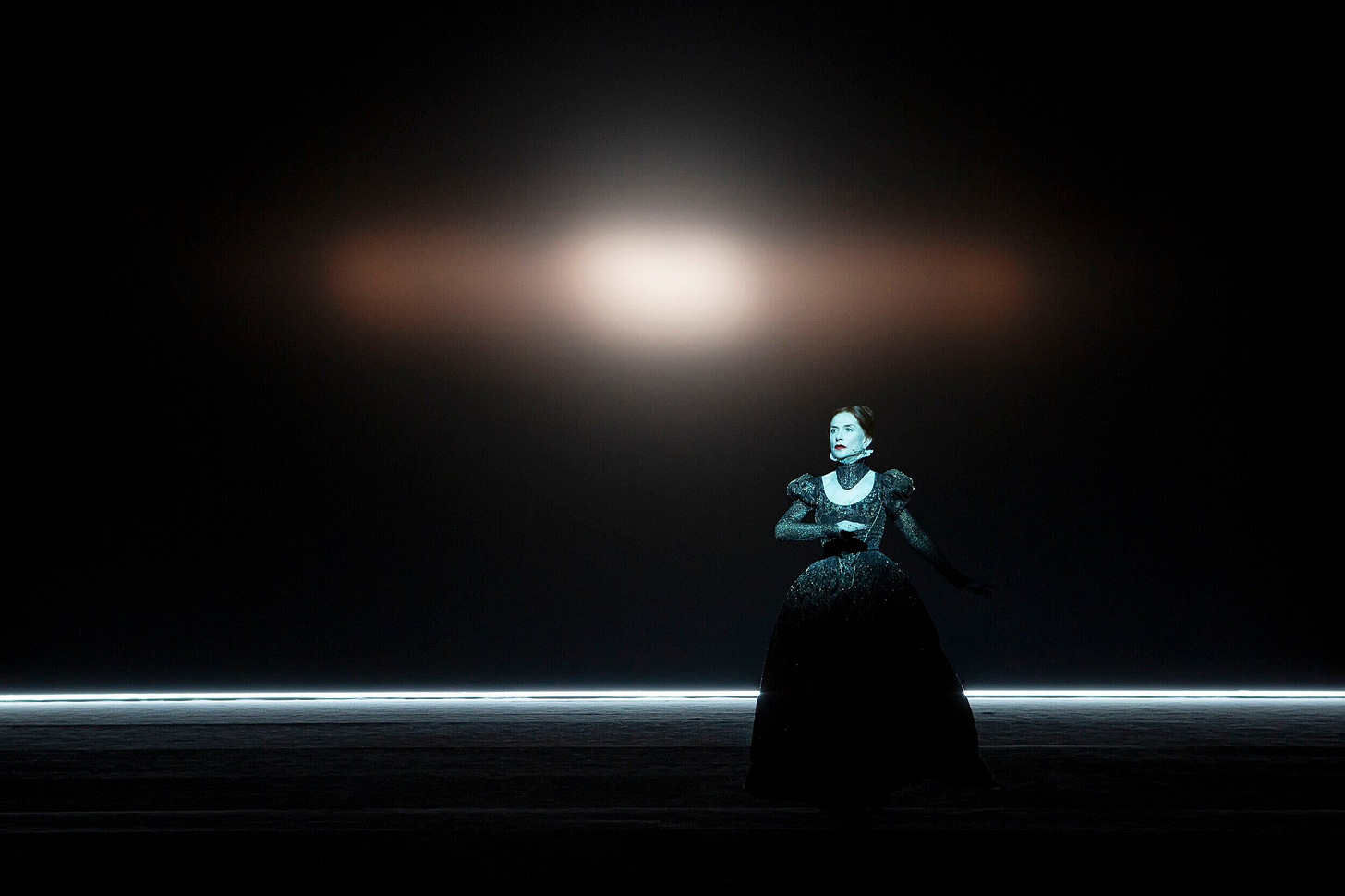Isabelle Huppert portrays Mary, Queen of Scots in third collaboration with Robert Wilson (photo by Lucie Jansch)
ROBERT WILSON & ISABELLE HUPPERT: MARY SAID WHAT SHE SAID
NYU Skirball Center for the Performing Arts
566 La Guardia Pl.
February 27 - March 2, $125
nyuskirball.org
Today I am kicking off a new Substack series called “Magical Moments,” which will focus on one specific element of a play, movie, art exhibit, concert, or other event that had a major impact on me. It could be a tiny aspect of the performance, the design, a single joke, how the narrative relates to the world that day, or anything else that affects my experience in a personally meaningful way.
I am going to start with an enlightening moment from Robert Wilson’s extraordinary Mary Said What She Said, a one-woman multimedia wonder in which French superstar Isabelle Huppert portrays Mary, Queen of Scots. Huppert’s third collaboration with Wilson, it premiered in 2019 at Théâtre de la Ville and is now making its US debut at NYU’s Skirball Center.
As the audience enters the theater, a short video on a small monitor in the middle of the red stage curtain is playing over and over again, of a dog chasing its tail, followed by a silent-film-like dialogue card that is hard to read from a distance; up close, you can more easily read what it says: “You fool me. I’m not too smart.”
It’s a very Wilson-esque way of preparing us for what is to come.
The curtain rises, and we see Ms. Huppert, in an elegant, regal black gown (by Jacques Reynaud), her red hair swept up in a tight bun, standing at the back of the empty set, in front of a large screen. We hear her speaking Darryl Pinckney’s poetic text, adapted from Mary’s letters and major biographies, in French, accompanied by English surtitles. Since Huppert is facing the screen, we can’t see her mouth, so it’s not clear whether the dialogue is live or prerecorded.
Bathed in darkness, she begins walking ever so slowly toward the front of the stage while the dialogue provides a short history lesson of how she became queen. The French words come fast and furious, the English translation appearing and disappearing quickly on the surtitle board. There are also two smaller boards offstage to the left and right, but they are much harder to read from my seat in the orchestra.
Then a light shines on Mary’s face, casting a haunting glow through the theater.
At that moment, I had a difficult choice to make: What should I be looking at?
The surtitles are so far above the stage that I quickly discern it will be impossible for me to watch Huppert and take in every word she is saying. (We do soon realize that some of the dialogue is prerecorded, but that doesn’t change the dilemma.) It’s like being at a tennis match and, despite your head going back and forth, you still too often miss the racquet hitting the ball.
Not only am I a slow reader but my OCD necessitates that I understand every word in a book, movie, or play, so I’m in a bit of a panic. I want to breathe in the text, which features such lines as “Why was I endowed with a soul so little capable of cruelty, yet urged to acts which have so much the appearance of it?” and “I am the relentless, delicate storm that folds men.”
In addition, since I know little of the details of Mary’s life, I have to follow along just to know what’s happening storywise.
Accompanying Huppert’s faster and faster dialogue are Ludovico Einaudi’s soaring, enveloping score and Wilson’s projections of light and color on the screen, which range from cold white, black, and gray to, later, warm yellow, red, and orange.
And then I decide: I will not be chasing my tail.
Instead, I will immerse myself in the Gesamtkunstwerk, or total work of art. I’m not going to try to read and understand every single word of the text, especially as Mary begins repeating certain thoughts and facts. I am not going to worry whether Huppert is actually speaking certain lines of dialogue or they are prerecorded. I am not going to concentrate so hard on Huppert’s mesmerizing voice or captivating image that I lose the flow of the music, and vice versa.
It’s magic.
Of course, the goal of any theatrical production is to bring together sound, light, movement, design, and performance to create a uniquely entertaining whole, but no one does that quite like Wilson, whose other iconic pieces over the last fifty-plus years include Einstein on the Beach, The Black Rider, and Hamletmachine.
In the talkback following the show, Huppert explained that she is merely an actress, doing her job and nothing more. That would be like saying that Wilson is merely a director, or set and lighting designer, doing his job and nothing more.
The standing ovation at the end of the show, one of the longest I have ever seen, would imply that they both are pretty good at what they do.
And as for me, tail? What tail?
[You can follow Mark Rifkin and This Week in New York every day here.]




Enjoy this new series... of course, today is the last day it's playing... and I can't afford it anyway, but it's nice to know it exists :)